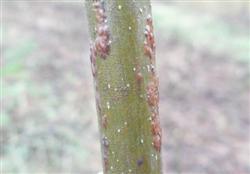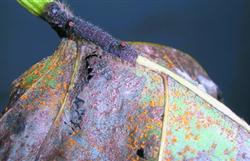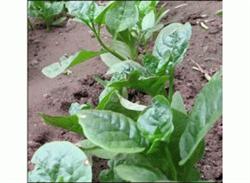Harm and control measures of skin rot of poplar

Poplar skin rot is a common and frequently-occurring disease, which does great harm to poplar, willow, elm and other tree species. The disease is a latent infectious disease. When there are adverse conditions such as drought, waterlogging, sunburn and frost injury, and when it is not easy to restore the vitality of trees after seedling transplantation or intensity pruning, the disease occurs rapidly, and the mild ones affect the growth of trees, such as late release of leaves, smaller leaves, withered branches, withered branches, and so on. Serious cases cause the death of trees. The symptoms of the disease occurred in the bark of branches such as poplar and willow. At the beginning of the disease, the skin appears irregular bulge, touch it softer, peeling has a faint smell of alcohol. The raised plaques gradually lose water, then dry up and sink, and even produce cracks. When peeling and watching, it can be seen that the subcutaneous cambium is rotten and the brown area appears on the surface of the xylem. The diseased skin expands continuously, and the expansion speed is the fastest in spring and autumn, and the vertical development is faster than that in horizontal. There are dense small black papules on the sunken skin, which is the conidium of the pathogen. In case of rain or excessive humidity, milky paste is extruded from the top of the black spot, and gradually turns to orange, that is, the spore angle of the bacteria. The spores are squeezed and dried to form slender tendrils. Conidial receptacles are sometimes arranged in concentric rings. After drying, the diseased skin is very easy to peel off, and it can be seen that the cortex decays into hemp-like filaments. If the diseased skin ring dries for a week, the above branches will dry up and form withered branches. There was no obvious ulcer spot in the branchlet, no obvious ulcer spot in the rough skin, no tendril spore horn, but amber conidia mass. The pathogen survived and grew in the diseased skin year after year, formed conidia in April and produced the most in May. Conidia horn is more after rain or humid weather. After Rain Water dissolves the spore horn, the spores spread by wind, rain, insects and birds to invade and incubate from the uninjured dead skin. In the northern region, the disease began to occur in the middle of March, and the disease was at its peak in May. The disease alleviated in July and stopped in September. The rotten skin disease of poplar was positively correlated with frost injury, sunburn, insect pest, salt injury and drought injury. in terms of tree species, silver white poplar and Populus euphratica were the most resistant, followed by small leaf poplar, plus poplar and drill poplar, and Populus tomentosa was the most susceptible to the disease. The seedlings used for planting are too large, the roots are injured during transplantation, the number of transplants is too many, and the large seedlings or young trees that have been planted for too long are not easy to recover after transplantation, so they are prone to disease. In urban and rural greening trees, it is beneficial to the disease because of poor pruning technology, strong pruning and too much mechanical injury. In shelterbelts and forests, the windward side is also prone to disease because it is often attacked by wind and sand. Because the density is too small or the pruning is too much, it is also easy to suffer from sunburn when the amount of light is too large. Control measures 1. Keeping trees growing exuberantly is the main way to prevent and cure the disease. Suitable soil conditions should be selected when planting, and tree species and varieties resistant to freezing, insect and sunburn should be selected to protect the root system. After planting, strengthen tending management, control stem borer, reasonable pruning without leaving stumps, and protect the wound. The trunk should be painted white in early winter to prevent frost injury and sunburn. After growing up, the hygienic condition of the stand should be improved and the weak branches and the whole plant should be removed. The shelterbelt should be designed to build a semi-permeable structure, and small shrubs should be planted on the windward side. 2. 10% alkaline water, 2% rehabilitation agent 843 (1:3 times liquid), 10% double effect liquid (1:10 times liquid), pine tar diesel oil (1:1), 10% sodium carbonate solution, carbendazim (1:25 times), topiramine (1:25 times), stone sulfur mixture can be selected for chemical control, but Shuangxiaoling (1:10 times liquid) is the preferred agent. Because of its good effect, low cost, sufficient drug source, easy to popularize and no drug harm, it is better to smear and spray dry. The use of the above several agents, 5 days after the application, such as 50~1ooppm gibberellin around the disease spot, can promote the formation of healing tissue, the disease spot is not easy to relapse.
- Prev

Skin rot of poplar and its control
Poplar skin rot: the symptoms of poplar rot occur on the trunk and branches, showing two types of dry rot and withered branches: dry rot mainly occurs in the trunk, big branches and branch bifurcations. At the initial stage, the disease showed dark brown edematous spots, cortical tissue decayed and softened, and the bark dried and sunken after dehydration, sometimes cracked.
- Next

Common problems in Auricularia auricula production
Auricularia auricula is an annual vine of the sunflower family, its leaves are thick, elastic, good taste, slippery taste, very similar to Auricularia auricula, so it is named Auricularia auricula. Now the cultivation techniques of Auricularia auricula are introduced as follows: first, cultivation methods 1. Direct seeding cultivation. The seeds used for direct seeding feeding seedlings were 6kg / mu and sowed. For.
Related
- Fuxing push coffee new agricultural production and marketing class: lack of small-scale processing plants
- Jujube rice field leisure farm deep ploughing Yilan for five years to create a space for organic food and play
- Nongyu Farm-A trial of organic papaya for brave women with advanced technology
- Four points for attention in the prevention and control of diseases and insect pests of edible fungi
- How to add nutrient solution to Edible Fungi
- Is there any good way to control edible fungus mites?
- Open Inoculation Technology of Edible Fungi
- Is there any clever way to use fertilizer for edible fungus in winter?
- What agents are used to kill the pathogens of edible fungi in the mushroom shed?
- Rapid drying of Edible Fungi

